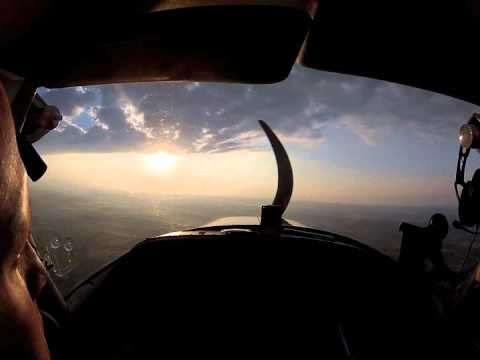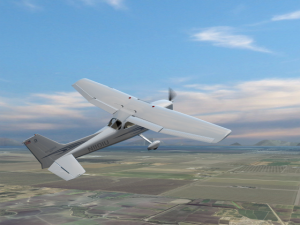
The departure stall
Throughout my training, I have done a lot of stalls, and eventually got the point where I was quite comfortable with them. Power off, power on, including the more advanced high power stalls. I was rather surprised when doing my full review of everything before my flight test, when my instructor asked me to demonstrate high power stalls I became rather nervous and was unable to perform one without throwing in the aileron on recovery.
I had let my training lapse and it had been quite awhile since I’ve done these more advanced stalls. A few power-off stalls allowed me to feel comfortable with them again but I continued to struggle with stalls using higher power settings, which cause sometimes a very pronounced wing drop due to asymmetric thrust, slipstream and other factors.
Why do we learn power-on stalls?
The power-on stall is basically a departure stall. We practice this stall to simulate a stall on departure, when we have a nose high attitude and high power settings (full power for take off). How could we stall on departure? If we fly into IMC on climb-out, hence loose the horizon and become disoriented, possibly succumb to an illusion that we are level and not nose-high enough (not reference or trust our instruments which tell us that we are in fact in a climb) and we pull back too much.
The airspeed bleeds off, and without knowing it we are nose high. As the aircraft reaches stall speed one of the wing drops off and when uncorrected, can enter a spin. At low altitudes, we have no time to recover. Before long we can be nose down in a spin with no altitude to spare.

Stall/spin accidents
There are a number of these stall-spin accidents every year, and most of them occour at low altitudes. According to an AOPA study, from 1993 to 2001 stall-spin accidents accounted for 10% of all accidents and 13% of all fatal accidents for fixed wing aircraft weighing less than 12,500 pounds. An earlier study by the FAA Small Aircraft Directorate analyzed a sample of 1700 stall-spin accidents as far back as 1973 and found that 93% of them began at or below pattern altitude, which was 800 feet back in the 1970’s.
So the reason we learn a high power stall is to avoid a dreaded departure stall and to recover quickly, with minimal loss of altitude, and in coordinated flight (avoid a wing drop).
More rudder coordination is required
The reason why a power-on stall can be more challenging and more scary, is because it will require more use of rudder than a power-off stall. We must remember not to use aileron, ONLY rudder, because not is only aileron ineffective in a stall – the wing is stalled – it can also exacerbate or aggravate the wing drop in a stall, making it even more banked.
Anticipate a wing drop
Generally with a power-on stall, we will get a wing drop. Because of asymmetric thrust and slipstream, we generally see the left wing drop. Recall the left turning tendency of the aircraft at high power settings, for example while on the takeoff roll. On the takeoff roll with full power we always apply plenty of right rudder to keep the aircraft on centreline.
However we will not always get a left wing drop, it can, in fact be the right wing that drops, requiring the use of left rudder instead of right to correct. There are many reasons for this: one wing could have more fuel than the other and be heavier, it can also vary with the prevailing winds. So it is important not to anticipate one wing dropping but to watch which one does and react appropriately.
So one wing drops, so there is a tendency for us to use aileron to correct. This is very natural. In a stall, we have to fight the urge to use aileron and instead, “step on the rising wing.” (thanks to my instructor Steve for the tip – it works!) This means to use rudder instead of aileron, in the same direction if the rising wing:
Left wing drops (right wing rises): instinct will tell you to use right aileron – use right rudder instead
Right wing drops (left wing rises): instinct will tell you to use left aileron – use left rudder instead.
Check out this video as a power on stall develops into a spin. Looks like the student puts it into a spin (on purpose, note how he uses aileron) and the person in the right seat, likely the instructor, recovers.
How can I become more comfortable with these types of stalls?
In a word, practice will make them easier, as you do them over and over again and you are able to control them, you will regain confidence. Another great tip is to visualize the manoeuvre and talk yourself through it, when you are not flying. I used visualization and imagined one of the wings dropping, and what I would do. Eventually lost my fear as I learned I could control the airplane with rudder. It is important to use rudder opposite to the turn to correct the wing dip as fast as possible, and to leave the aileron in neutral position.
Like anything with flying, repetition will help you learn and feel more comfortable over time. Practice means everything!

